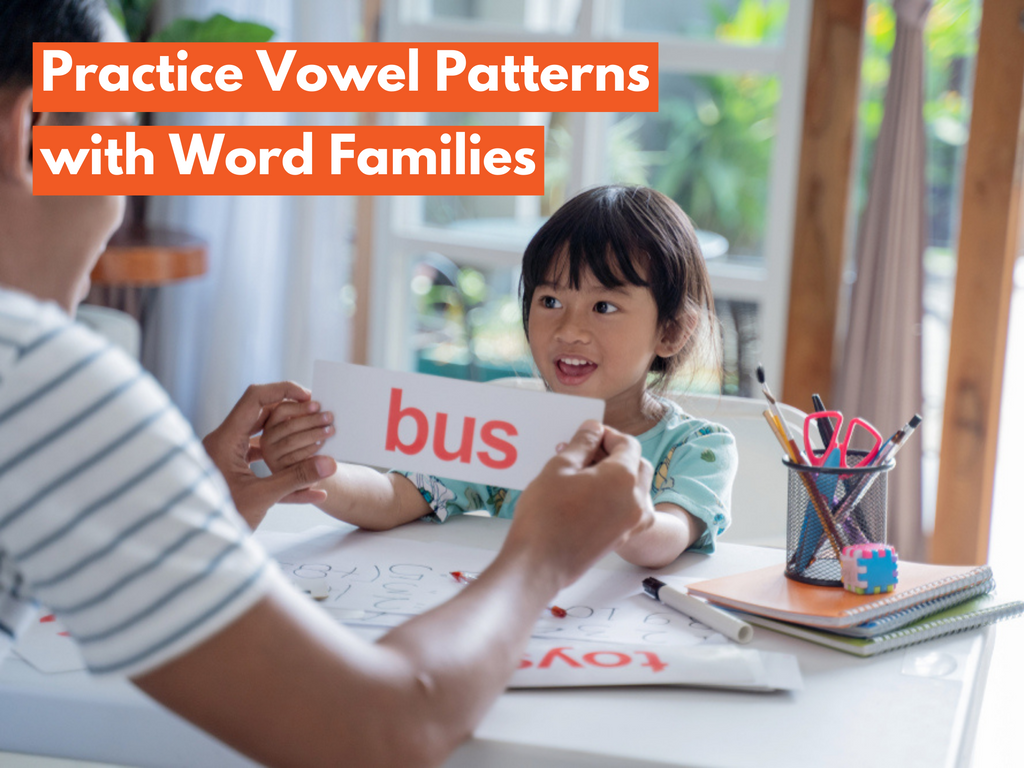By Margaret Tsubakiyama
The study of word families, or phonograms, has been around for a long time. Many beginning reader texts are full of them: The fat cat sat on the mat. The big pig has a wig. My pet can get wet, etcetera.
Word families are popular because they are a wonderful tool for beginning readers. Letter by letter, vowels are fair-weather friends. Just think of the many sounds the letter “a” makes (or does NOT make) in the words “cat,” “cane,” “car,” and “coat.” Also, decoding is hard work. By the time a beginning reader decodes the word c-a-n, they may have forgotten the rest of the sentence and lost the meaning/syntax clues they need.
However, taken in word family “chunks,” vowels are much more reliable. For example, the letter “a” always makes the same sound in “fan,” “tan,” “can,” and “van.” This is a tremendous help for the beginning reader.
Books with rhymes are an ideal way to introduce students to word families. Joy Cowley’s What is a Book? is full of word families. Try reading a rhyming book multiple times. The first time, ask students to identify the rhymes. Next, discuss how some rhyming words have the same spelling patterns. Read the book a second time, pausing to write the words that rhyme. Introduce word families by asking students to identify which rhyming words have the same spelling patterns.
Word families are valuable because they introduce the beginning reader to a world of words. Frye tells us that 38 phonograms (word family rimes such as -at, -et, -ip, etc.) can generate 654 one-syllable words that children commonly use in Grades 1 to 3. That’s a great return on teaching investment!
Even more impressive is that these familiar word families are the basis for syllabic chunks that occur in thousands of multisyllabic words. For example, the word “hippopotamus” comprises four familiar rimes (-ip, - o, -ot, and -us), which beginning readers are familiar with from single-syllable words like zip, go, hot, and bus. Word families can help–even when reading “hippo-sized” big words.
Like so much in teaching, the WHEN is almost as important as the WHY. Once a child has mastered their consonants and short vowels, they are ready to work on building fluency and learning word families.
A fun way to practice word families is using magnetic letters. On an index card, write the rime you want to practice (_at, _op, _in, etc.). Give the children magnetic letters to fill in the blank spot to “build a word.” You can extend this activity by having the children sort the words by “real words” and “nonsense words.”
Word searches are another fantastic way to practice word families because they encourage children to hone in on spelling patterns. There are lots of word searches available online or in workbooks. You can also make your own using grid paper. Some children enjoy making their own, especially if you give them a list of words to start from and a sheet of 10 by 10 grid paper.
Word families help the beginning reader “lift-off” to the next level. Try them in your classroom!
~~~
Interested in more rhyming books perfect for read-alouds? Check out Hameray's special imprint, Bear & Bobcat Books. These 5 original Joy Cowley storybooks will charm readers of all ages. Each story features a beloved character, including Mrs. Wishy-Washy, Dan the Flying Man, the Hungry Giant, and the Meanies. Available as hardcover books or big books.
~~~

Margaret Tsubakiyama is a kindergarten teacher in California. She has a master's in Literacy and Language Acquisition and is a National Board Certified Teacher.























































